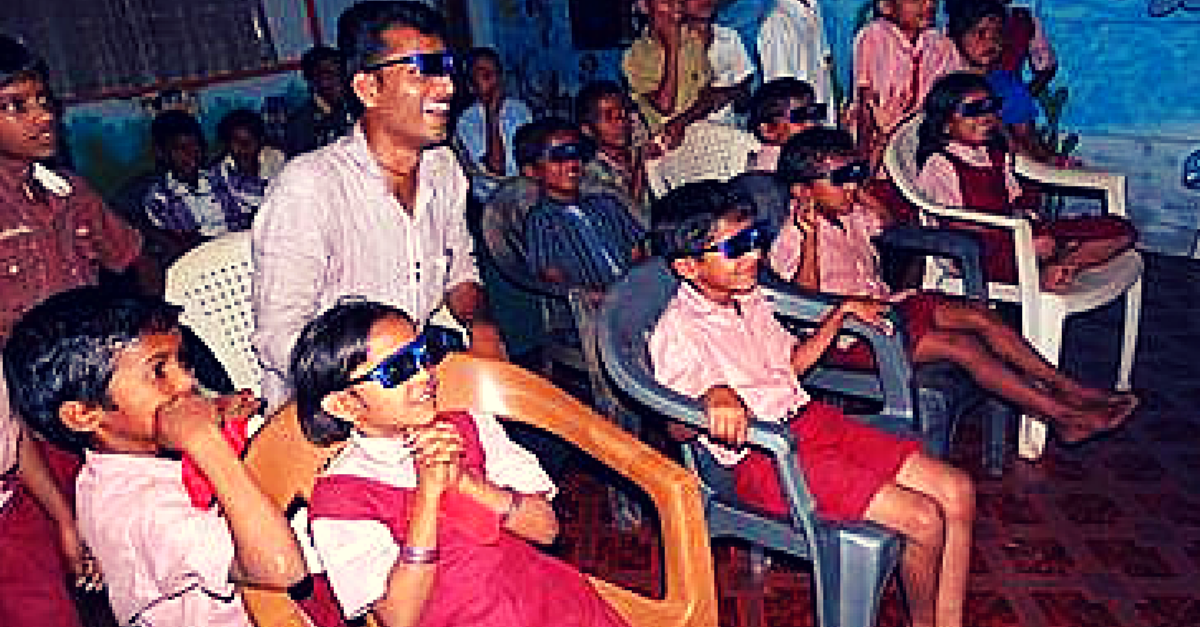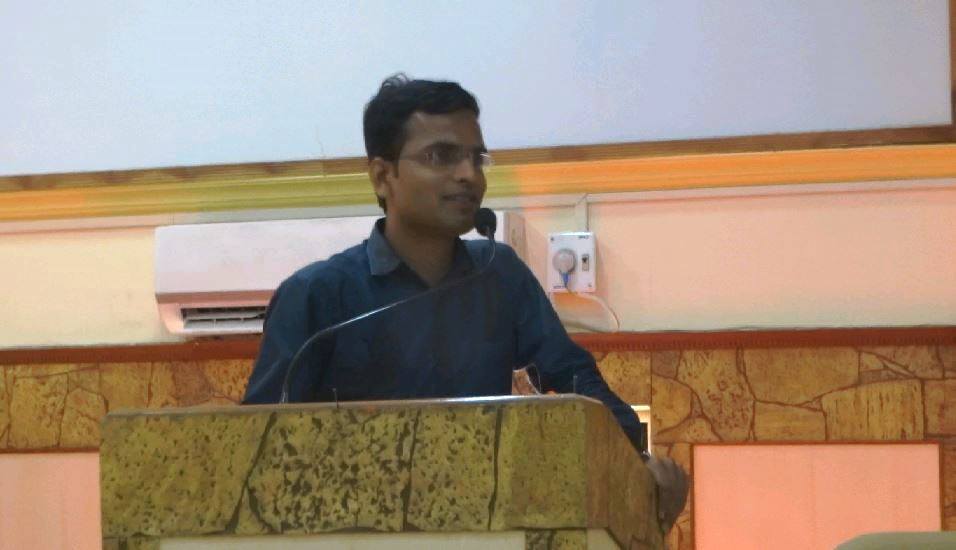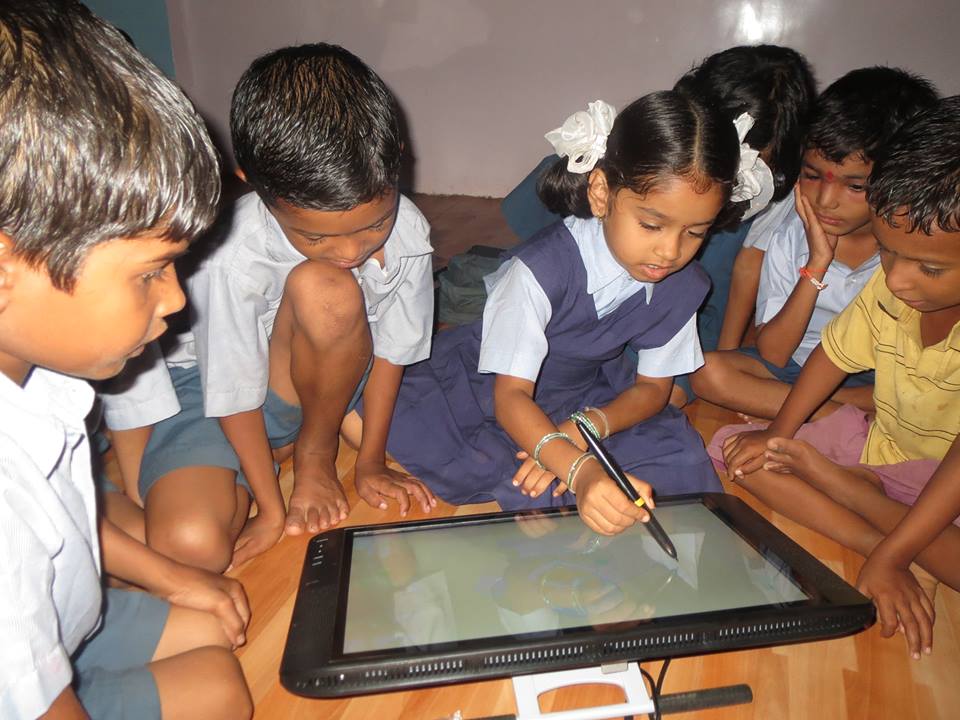A 27-Year-Old Govt School Teacher is Making Headlines with his Unique Model of Education
This inspiring young teacher converted an ordinary zilla parishad school into an extraordinary learning space, a digital shala, that will now be replicated by the Maharashtra government in 5,000 schools across the state.

This inspiring young teacher converted an ordinary zilla parishad school into an extraordinary learning space, a digital shala, which will now be replicated by the Maharashtra government in 500 schools across the state.
A 27-year-old primary school teacher from Pashtepada, Maharashtra, is creating ripples of change with his fresh and ingenious teaching methods. He has converted a zilla parishad school into a ‘smart school,’ where children are taught using tablets and computers instead of schoolbooks. The majority of the students are children of farmers and labourers.
Meet Sandip Gund, the man whose innovative teaching methods have inspired over 40 schools in Thane district to replicate his ‘Gund’ model of teaching this year.

Sandip’s extraordinary journey began when he was posted as a primary school teacher in Pashtepada.
“The conditions here were very poor. Students did not turn up for classes. For once, I actually thought of giving up and going back to my native place,” recalls Sandip.
Not one to be disheartened though, Sandip began to explore ways of making school attractive to the children and classes interesting for students. He had no knowledge of technology but started to visit a nearby cyber cafe where he read about and became interested in the use of solar panels, projectors, and tablets.
After one year of research, he was finally ready with his ‘Gund’ model of teaching.

The ‘Gund’ model has made the school technology-friendly. Now, the students don’t carry heavy school bags and big books to class anymore. Instead, a solar-charged tablet and digital pen is all they need to work on their lessons for the day.
“I noticed that students would often bunk schools to watch TV in a villager’s home. It was the only house with a TV. I thought of channelizing their interest in digital content to something more useful. This is when I got a donated computer for the school and started using science, animation and other interesting ways of teaching the children,” says Sandip.
Next, Sandip purchased a tablet PC and projector using money from his own and other teachers’ salaries. They all donated Rs. 5,000 each. A few villagers also extended help.
“Our digital learning project received an award from the state’s Council of Educational Research and Training and we purchased a touchscreen from the cash prize. Students showed more interest in learning through this interactive model rather than the regular blackboard lessons,” he adds.
This was followed by textbook lessons being converted into PDF files and projected on the touchscreen.
All the students have tablets of their own now. The tablets are connected to a projector, which the teachers use to impart their lessons and get the students to do their classwork.
The kids share their work and assignments with the teachers and fellow students using flash transfer, a wireless data transfer technology.
This digital school does not have any books.
The students get to practice their lessons on the tablets. They also get to play games. The new technology and intervention have revived the interest in education in this small taluk again. The students, who had seen their elder siblings drop out of school because they found it uninteresting, now have a new found interest in learning and can’t wait to go to their technology-friendly school everyday. They can also take their devices home and connect them to TV sets to show their work to their parents.
“However, students are asked to do their homework in notebooks, so that they have good writing practice,” says Sandip.
The dropout rate has decreased in the area.
Thanks to Sandip’s model, many other families that were earlier sending their kids to private schools, now send them to this zilla parishad school. The learning outcomes have improved too and there are not many vacant seats in the classes anymore.
The success of the ‘Gund model’ has impressed the families of nearby villages too. They have collected funds and have asked Sandip to replicate the model in their villages as well.
In addition, many rural schools spread across 19 districts in Maharashtra have shown interest in adopting this digital shala model.
Like this story? Or have something to share? Write to us: [email protected], or connect with us on Facebook and Twitter (@thebetterindia).
This story made me
- 97
- 121
- 89
- 167
Tell Us More
We bring stories straight from the heart of India, to inspire millions and create a wave of impact. Our positive movement is growing bigger everyday, and we would love for you to join it.
Please contribute whatever you can, every little penny helps our team in bringing you more stories that support dreams and spread hope.





















